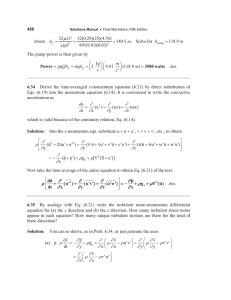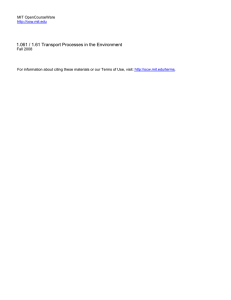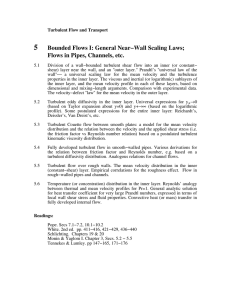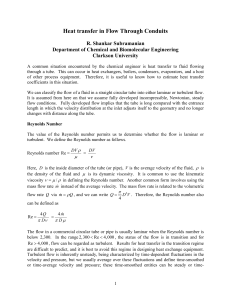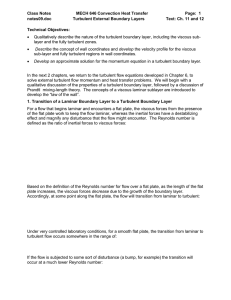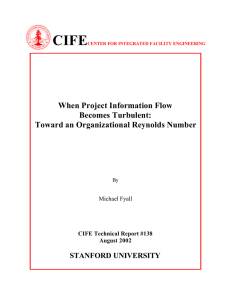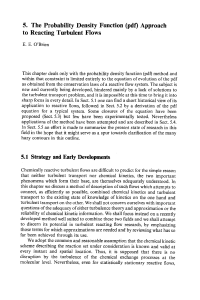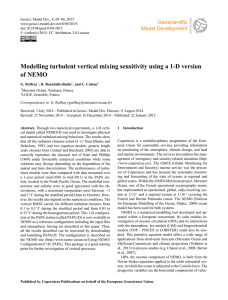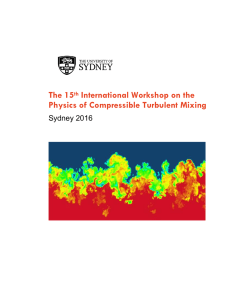3 Concepts in Turbulence
advertisement
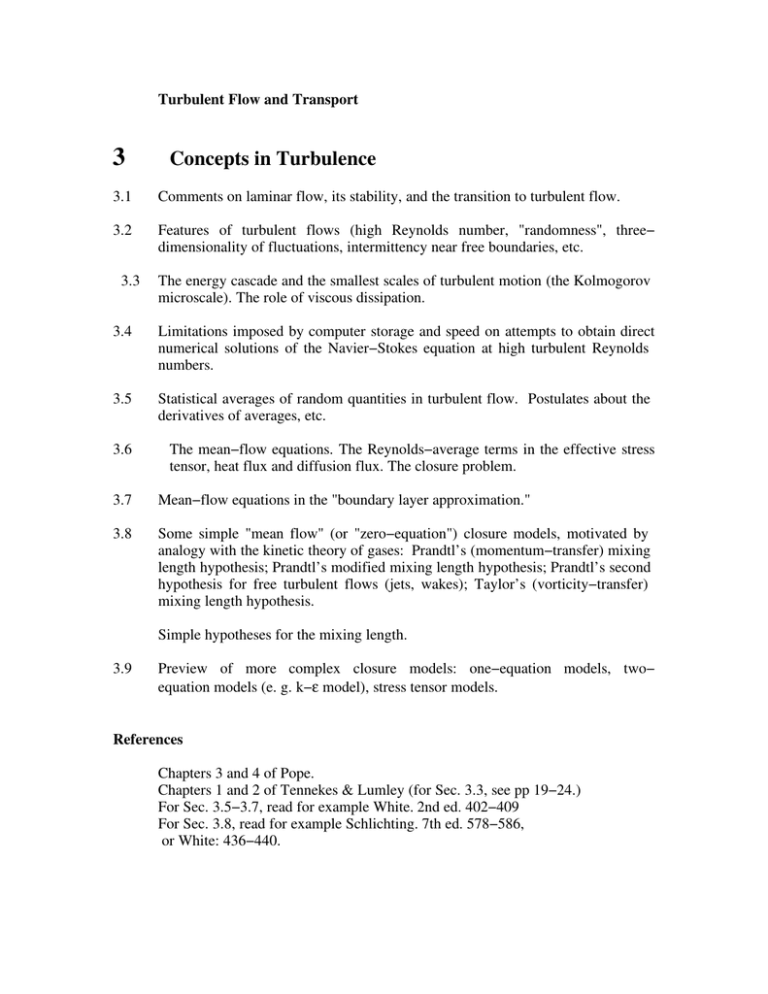
Turbulent Flow and Transport 3 Concepts in Turbulence 3.1 Comments on laminar flow, its stability, and the transition to turbulent flow. 3.2 Features of turbulent flows (high Reynolds number, "randomness", three− dimensionality of fluctuations, intermittency near free boundaries, etc. 3.3 The energy cascade and the smallest scales of turbulent motion (the Kolmogorov microscale). The role of viscous dissipation. 3.4 Limitations imposed by computer storage and speed on attempts to obtain direct numerical solutions of the Navier−Stokes equation at high turbulent Reynolds numbers. 3.5 Statistical averages of random quantities in turbulent flow. Postulates about the derivatives of averages, etc. 3.6 The mean−flow equations. The Reynolds−average terms in the effective stress tensor, heat flux and diffusion flux. The closure problem. 3.7 Mean−flow equations in the "boundary layer approximation." 3.8 Some simple "mean flow" (or "zero−equation") closure models, motivated by analogy with the kinetic theory of gases: Prandtl’s (momentum−transfer) mixing length hypothesis; Prandtl’s modified mixing length hypothesis; Prandtl’s second hypothesis for free turbulent flows (jets, wakes); Taylor’s (vorticity−transfer) mixing length hypothesis. Simple hypotheses for the mixing length. 3.9 Preview of more complex closure models: one−equation models, two− equation models (e. g. k−ε model), stress tensor models. References Chapters 3 and 4 of Pope. Chapters 1 and 2 of Tennekes & Lumley (for Sec. 3.3, see pp 19−24.) For Sec. 3.5−3.7, read for example White. 2nd ed. 402−409 For Sec. 3.8, read for example Schlichting. 7th ed. 578−586, or White: 436−440.

